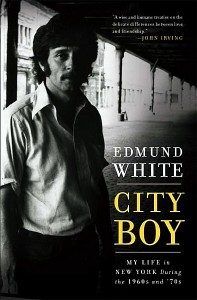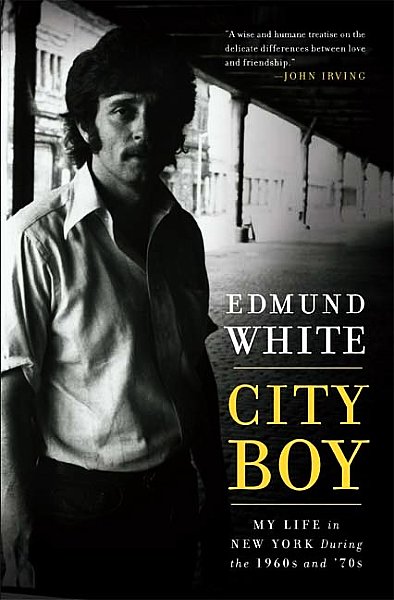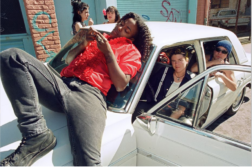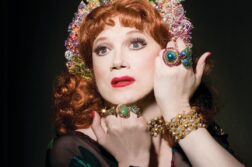THE MOST DEVOTED FANS of a given city are perhaps the people who’ve come to it from the farthest away. Hailing from the Leave-It-to-Beaver suburbs of Cincinnati, Ohio, Edmund White arrived in New York in the 1960’s and reveled in the intellectual ozone and garrulous open-mindedness of its denizens. Meanwhile, his newly unleashed libido made a beeline for the activities practiced on the near-deserted piers and in parked trucks of Sodom on the Hudson.
In his new book City Boy(Bloomsbury), White sets his memoir of the 60’s and 70’s against the sterility of the previous decade: “In retrospect we could see that the 1950’s had been a reactionary period in America of Eisenhower blandness, of virulent anticommunism, of ‘the feminine  mystique.’ I lived through the 50’s in the Midwest when everything that was happening—the repression of homosexuality, for instance, the demonization of the Left, the giggly, soporific ordinariness of adolescence, the stone deafness to the social injustice—seemed not only unobjectionable but also nonexistent.” The shift to the 60’s is matched by a shift to a livelier, more dazzling prose: “The great triumph of the 60’s was to dramatize just how arbitrary and constructed the seeming normality of the 50’s had been. We rose up from our maple-wood twin beds and fell onto the great squishy, heated water bed of the 60’s.”
mystique.’ I lived through the 50’s in the Midwest when everything that was happening—the repression of homosexuality, for instance, the demonization of the Left, the giggly, soporific ordinariness of adolescence, the stone deafness to the social injustice—seemed not only unobjectionable but also nonexistent.” The shift to the 60’s is matched by a shift to a livelier, more dazzling prose: “The great triumph of the 60’s was to dramatize just how arbitrary and constructed the seeming normality of the 50’s had been. We rose up from our maple-wood twin beds and fell onto the great squishy, heated water bed of the 60’s.”
If the 1940’s, 50’s, and early 60’s represented the golden age of Broadway and of New York City in general, the later 60’s and 70’s marked a seismic shift as the Big Apple, facing financial bankruptcy, a crumbling infrastructure, rampant street crime, and inadequate services, seemed to be rotting at its core. For gay people in this period, it meant hanging out in mafia-run gay bars blatantly in cahoots with corrupt members of the New York Police. Yet it was arguably this very environment that supplied the irritants necessary for change. The wider influences of the Sexual Revolution, the fight for black civil rights, and the anti-Vietnam War movement also helped to fuel a spirit of activism that would flare up in the Stonewall Riots in 1969.
Just before we started our interview, White received a phone call from his editor asking his advice about a blurb for the cover of City Boy. It concerned author John Irving (of The World According to Garp fame), whose blurb we can now read on the front cover: “A wise and human treatise on the delicate differences between love and friendship.” On the back cover he elaborates: “I believe Edmund White is one of the best writers of my generation; he’s certainly the contemporary American writer I reread more than any other, and the one whose next book I look forward to reading most.”







